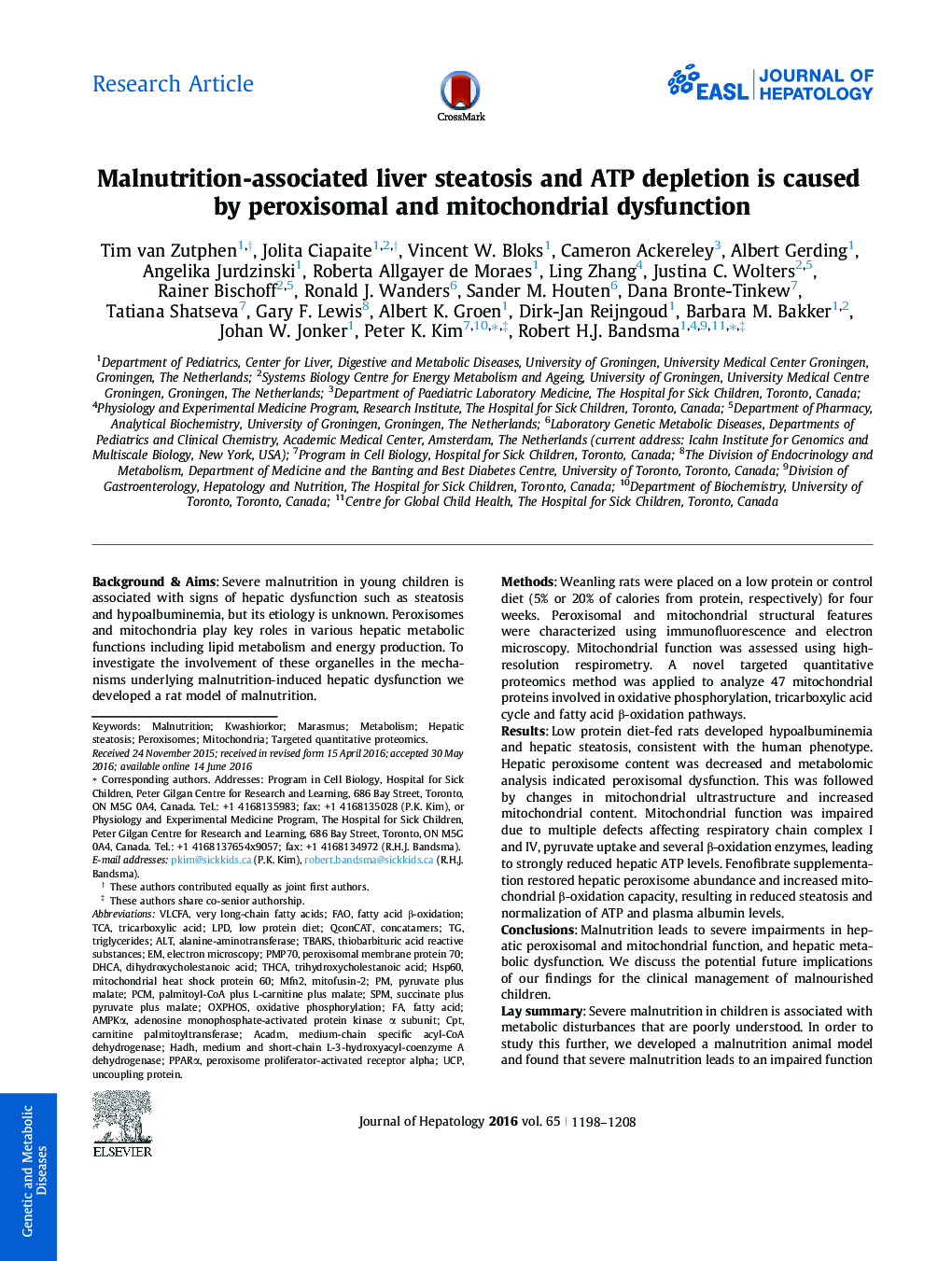| کد مقاله | کد نشریه | سال انتشار | مقاله انگلیسی | نسخه تمام متن |
|---|---|---|---|---|
| 5660495 | 1407491 | 2016 | 11 صفحه PDF | دانلود رایگان |

Background & AimsSevere malnutrition in young children is associated with signs of hepatic dysfunction such as steatosis and hypoalbuminemia, but its etiology is unknown. Peroxisomes and mitochondria play key roles in various hepatic metabolic functions including lipid metabolism and energy production. To investigate the involvement of these organelles in the mechanisms underlying malnutrition-induced hepatic dysfunction we developed a rat model of malnutrition.MethodsWeanling rats were placed on a low protein or control diet (5% or 20% of calories from protein, respectively) for four weeks. Peroxisomal and mitochondrial structural features were characterized using immunofluorescence and electron microscopy. Mitochondrial function was assessed using high-resolution respirometry. A novel targeted quantitative proteomics method was applied to analyze 47 mitochondrial proteins involved in oxidative phosphorylation, tricarboxylic acid cycle and fatty acid β-oxidation pathways.ResultsLow protein diet-fed rats developed hypoalbuminemia and hepatic steatosis, consistent with the human phenotype. Hepatic peroxisome content was decreased and metabolomic analysis indicated peroxisomal dysfunction. This was followed by changes in mitochondrial ultrastructure and increased mitochondrial content. Mitochondrial function was impaired due to multiple defects affecting respiratory chain complex I and IV, pyruvate uptake and several β-oxidation enzymes, leading to strongly reduced hepatic ATP levels. Fenofibrate supplementation restored hepatic peroxisome abundance and increased mitochondrial β-oxidation capacity, resulting in reduced steatosis and normalization of ATP and plasma albumin levels.ConclusionsMalnutrition leads to severe impairments in hepatic peroxisomal and mitochondrial function, and hepatic metabolic dysfunction. We discuss the potential future implications of our findings for the clinical management of malnourished children.Lay summarySevere malnutrition in children is associated with metabolic disturbances that are poorly understood. In order to study this further, we developed a malnutrition animal model and found that severe malnutrition leads to an impaired function of liver mitochondria which are essential for energy production and a loss of peroxisomes, which are important for normal liver metabolic function.
88
Journal: Journal of Hepatology - Volume 65, Issue 6, December 2016, Pages 1198-1208